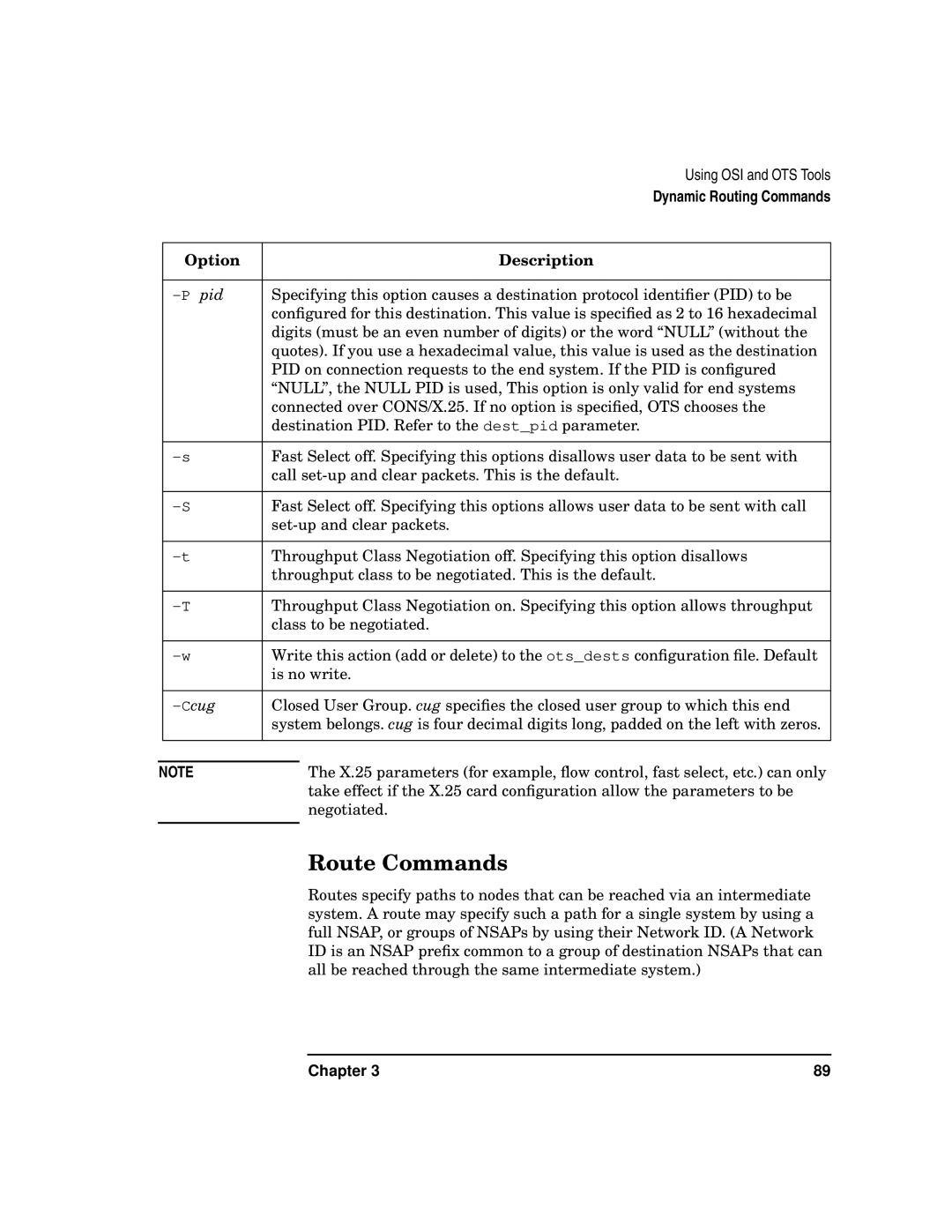
|
|
| Using OSI and OTS Tools |
|
|
| Dynamic Routing Commands |
|
|
|
|
| Option |
| Description |
|
|
| |
| Specifying this option causes a destination protocol identifier (PID) to be | ||
|
| configured for this destination. This value is specified as 2 to 16 hexadecimal | |
|
| digits (must be an even number of digits) or the word “NULL” (without the | |
|
| quotes). If you use a hexadecimal value, this value is used as the destination | |
|
| PID on connection requests to the end system. If the PID is configured | |
|
| “NULL”, the NULL PID is used, This option is only valid for end systems | |
|
| connected over CONS/X.25. If no option is specified, OTS chooses the | |
|
| destination PID. Refer to the dest_pid parameter. | |
|
|
| |
| Fast Select off. Specifying this options disallows user data to be sent with | ||
|
| call | |
|
|
| |
| Fast Select off. Specifying this options allows user data to be sent with call | ||
|
| ||
|
|
| |
| Throughput Class Negotiation off. Specifying this option disallows | ||
|
| throughput class to be negotiated. This is the default. | |
|
|
| |
| Throughput Class Negotiation on. Specifying this option allows throughput | ||
|
| class to be negotiated. | |
|
|
| |
| Write this action (add or delete) to the ots_dests configuration file. Default | ||
|
| is no write. | |
|
|
| |
| Closed User Group. cug specifies the closed user group to which this end | ||
|
| system belongs. cug is four decimal digits long, padded on the left with zeros. | |
|
|
|
|
|
|
| The X.25 parameters (for example, flow control, fast select, etc.) can only |
NOTE |
| ||
|
|
| take effect if the X.25 card configuration allow the parameters to be |
|
|
| negotiated. |
|
|
|
|
Route Commands
Routes specify paths to nodes that can be reached via an intermediate system. A route may specify such a path for a single system by using a full NSAP, or groups of NSAPs by using their Network ID. (A Network ID is an NSAP prefix common to a group of destination NSAPs that can all be reached through the same intermediate system.)
Chapter 3 | 89 |
